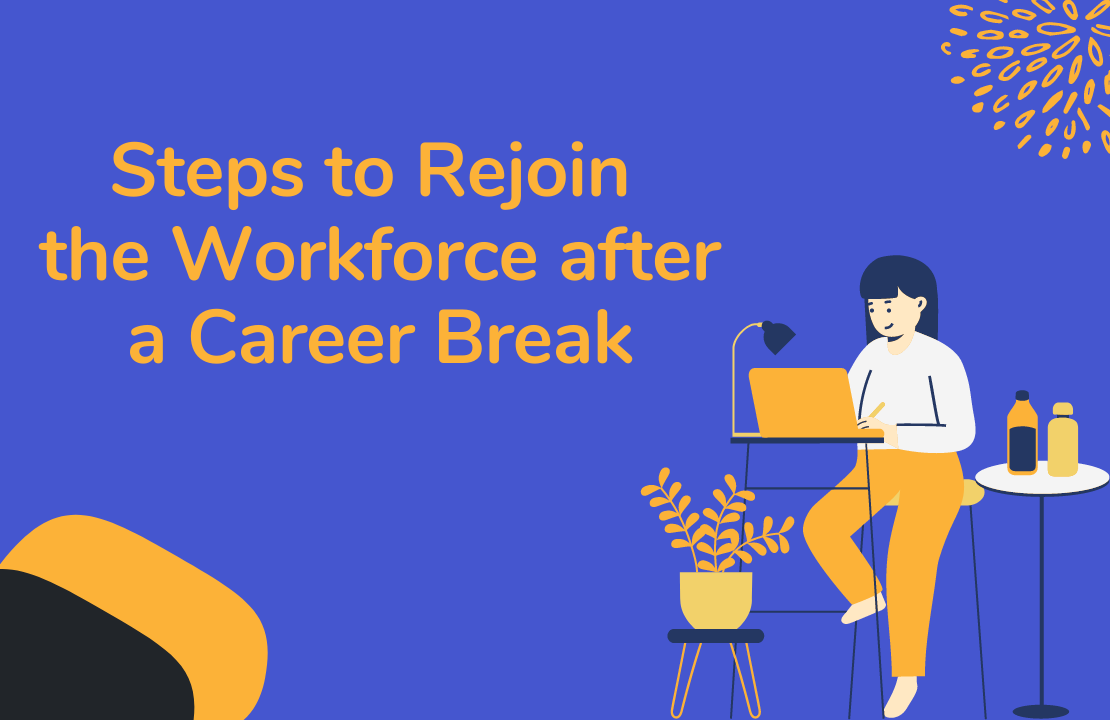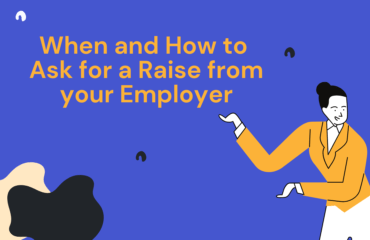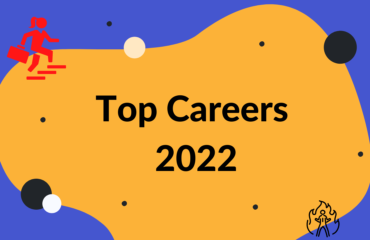Table of Contents
With many professionals taking a break for family care, traveling, or volunteerism, career breaks are not as uncommon as you may think. According to research, approximately 4% of the workforce has taken a career break for six months or more. In the UK, 90,000 employees take a break each year.
However, re-entering the job market can be a daunting process. It requires effort, time, and strategy. If you are one of such professionals returning from a career break, this article is for you. Let’s have a look at the process in 8 simple steps.
Step 1: Research your target industry based on your interests
Changes are bound to happen in your industry. Understand your interests and requirements by carefully analyzing the industry you want to work in, the types of job roles in demand, and the desired working conditions. This will help you identify your target industry and domain based on your needs. You can also begin by thinking about what you didn’t have in your previous role. This will make it easier for you to have a clear idea of your preferences.
If you are planning to move to a new industry or function, it would require a detailed analysis of the new domain. This would include the scope of your target industry, types of job roles available, job requirements, and much more. Furthermore, find out the recent developments and trends. Doing so will help you find the right jobs that align with your interest and experience.
Step 2: Identify relevant jobs
Based on your needs and market research, start looking for your target role. Cast your net wider by looking for related roles in the same industry or domain. For example, if you are looking for digital marketing roles, you could explore SEO marketing, content marketing, or email marketing roles. Most of the requirements for such roles would be similar. Some resources that you can use to identify relevant jobs are:
- Job search boards, like Indeed, Glassdoor, TargetJobs, or LinkedIn
- Professional and personal network
- You target employers’ career websites
- Local career fairs, like London Job Show
We also suggest trying different keywords while looking for a role, as the job title may differ. For example, the role of project manager may also be termed as senior project coordinator, project leader, or program director depending on the organization or industry. So, make sure you use a combination of keywords to identify the right role.
Step 3: Plan your return
Now that you have identified relevant jobs, start preparing your applications. You cannot remove a career gap from your application but you can compensate in other ways. According to a CIPD study, interviewers tend to favor those who manage time efficiently during the break. So to create a strong application, we recommend pursuing certifications to complement your interest in your target role. You can also enroll for Massive Open Online Courses (MOOCs) on platforms like Udemy or Coursera to bridge any skill gap. Additionally, you may try volunteering or temporary/freelance opportunities to gain experience that can add value to your profile.
Step 4: Update your career documents
Your target employer sees you in your resume and cover letter. Thus, it is important to create best-practice career documents before making your applications. In case of career gaps of less than six months, we do not suggest adding any reasons to your career documents. However, if your gap was for more than six months, you may talk about it briefly. Here are some tips on updating your resume and cover letter.
1. Resume
Customization of your applications for each job is essential. We strongly recommend going through the job descriptions, identifying relevant keywords, and adding them to your resume. You can also use tools like RezRunner or JobScan to pick out keywords. Additionally, it is also imperative to use the latest structures and formats.
2. Cover Letter
Cover letters are a good spot for you to convince the hiring team of your achievements and skills by providing relevant examples. You should start your cover letter by letting them know about the role you are applying for. If relevant, you can also mention your career break here. Then, delve deeper into your experience and let them know about your expertise. Moreover, don’t forget to add an employee-centric paragraph stating why you want to work with them. This gives the employer a clear idea of your interest and creates a good first impression.
Step 5: Be visible to employers
Once you have the plan ready, the next step is to enhance your visibility to potential employers by updating your LinkedIn page based on best practices. Dig deep and you will find good leads and references on other social media platforms like Twitter and Facebook. These sites have a large number of users who post job ads and vacancies.
We suggest getting in touch with recruitment agencies to remain updated about new jobs. Moreover, you can use job search boards like Glassdoor, Indeed, and Monster to connect with employers. Visiting the career pages of companies and registering your profile as an active job seeker is also another good way to boost your visibility.
There are plenty of career returner schemes and returnship programs offered by companies for people with employment gaps or those reentering the job market. We strongly advise applying for such opportunities as they are specially designed for professionals like you. For example, companies including Accenture and IBM have return-to-work programs to help people on a career break.
Step 6: Build your network
Networking comes in handy when looking for employment options. It can direct you to unique schemes such as returnship programs designed especially for people returning after a break. Your network can also introduce you to new opportunities through personal sources. We also recommend connecting with professionals working with your target employers and recruiters working in your target industries. Once connected, focus on developing a relationship with them. In addition, consider joining self-help groups for people on career breaks to boost your morale, keeping you engaged and productive.
Step 7: Reach out to career strategists
If you are confused or overwhelmed about your re-entry to the job market, approaching career strategists and coaches can put you at ease. They can provide you with resources, help you take a structured approach, and walk you through at a comfortable pace. Other benefits of working with them include access to mock interviews, networking best practices, and high-quality career documents.
Tip: If you don’t find it feasible to connect with a career strategist, you can also reach out to experienced professionals working in your target industry. They can give you insightful advice on how to break into the industry.
Step 8: Prepare well for your interview
Your first interview can be scary but a spot-on preparation can help you be articulate and confident. A few months could bring considerable changes in the work done. Therefore, doing a little homework on the role, expectations, and desired skills will help you paint a clear picture of what the interviewer is looking for in the conversation with you. We also suggest looking up common interview questions to help you frame relevant answers ahead of time. If you come across as a confident and well-prepared candidate, the interviewers may also refer you to other positions internally, as they become available.
Tip: Don’t be stressed or apologetic for your career break. Instead, demonstrate that you are capable of adding value to your target role. You can highlight your skills, experience, and knowledge that align with the requirements of the job.
While it is difficult to return after a break, we suggest assessing the opportunities instead of taking up the first opportunity that comes your way. Before an intense job search, it’s advised to understand the current job market, update relevant documents, activate networks, and prepare well for interviews. Rejoining work can be challenging and scary for many but there are lots of companies that have acknowledged the need for a return-to-work program. Still confused? We are here to help.











